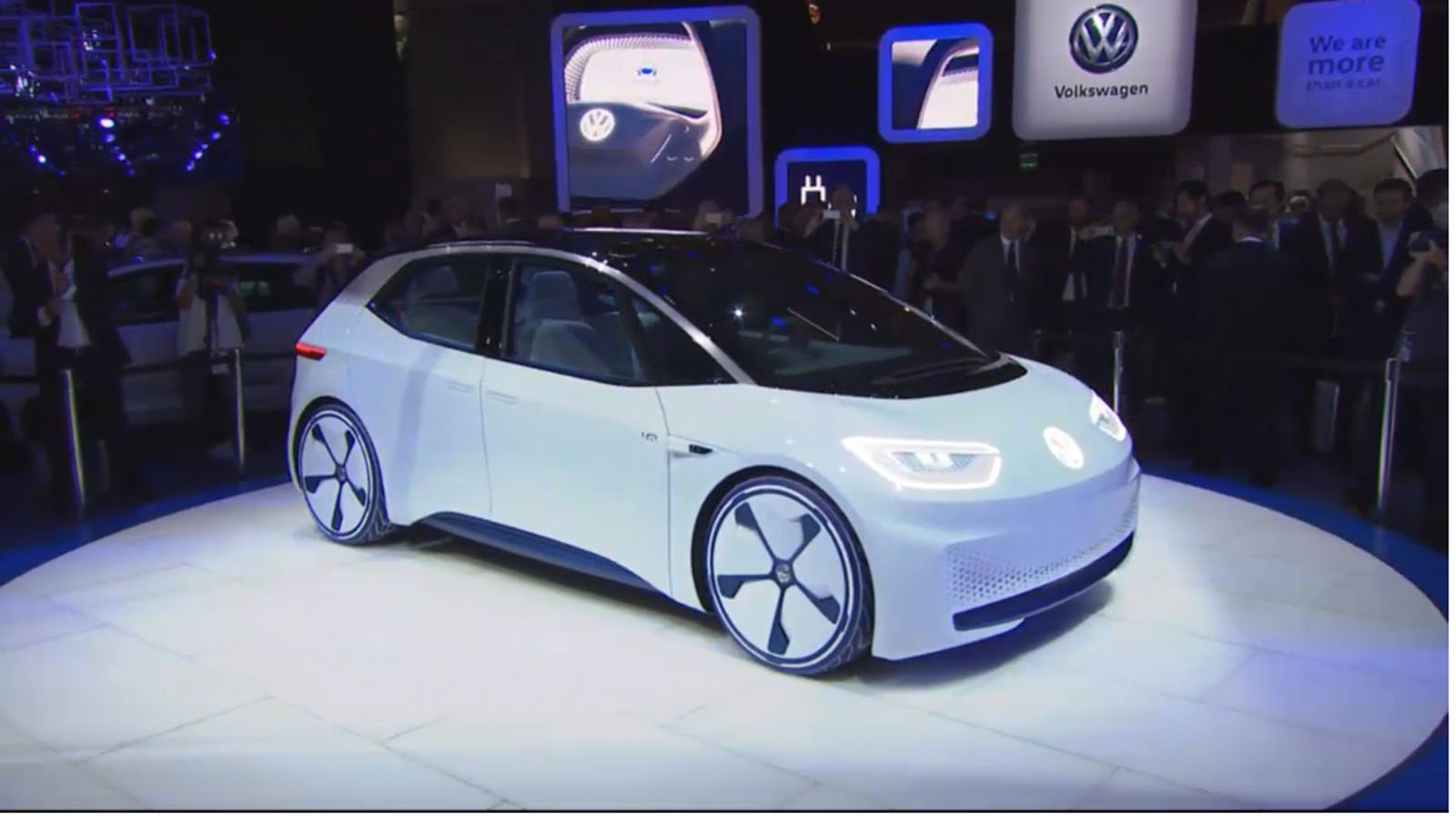With an illuminated badge making it easily identifiable as a VW, the new car departs quite radically from existing models. Key elements include a largely unadorned front end, ultra-short front overhang, a steeply rising bonnet line, a heavily raked windscreen, large wheel houses housing 20in wheels, prominent sill elements, cantilever-style rear doors, an extended roofline, a prominent rear spoiler element and a glass tailgate.

By eschewing a traditional grille, using flush fitting glass for the side windows and extending the roofline beyond the top of the tailgate, VW’s designers have clearly attempted boost the aerodynamic efficiency of the ID.
At 4100mm in length, 1800mm in width and 1530mm in height, the ID is 155mm longer, 9mm wider and 77mm higher than the existing seventh-generation Golf. It also rides on a wheelbase that is 130mm longer than that of Europe’s perennial best seller at 2750mm.
With interactive LED headlights that have been conceived to mimic the action of a human eye by giving the impression of being able to open and close, as well as LED units concealed within various parts of the exterior, the lighting properties and overall visual character of the ID alters depending on the drive mode.

When parked, the headlight graphic is designed to provide an impression of a closed eye – as if to signal it is asleep. At start-up, the headlights blink and the graphic is altered to convey the action of an eye opening. At the same time, the VW logos front and rear are illuminated in white, while the lower section of the front bumper, side sills and rear diffuser are lit up in blue.
When drive is selected, the LED daytime driving lights are automatically switched on and the VW logos remain lit in white. In autonomous drive mode, a laser scanner deploys from the roof and the front bumper, side sills and rear diffuser are once again illuminated in blue. During recharging, the LED units pulsate in a simulation of the flow of energy being provided to the battery.
